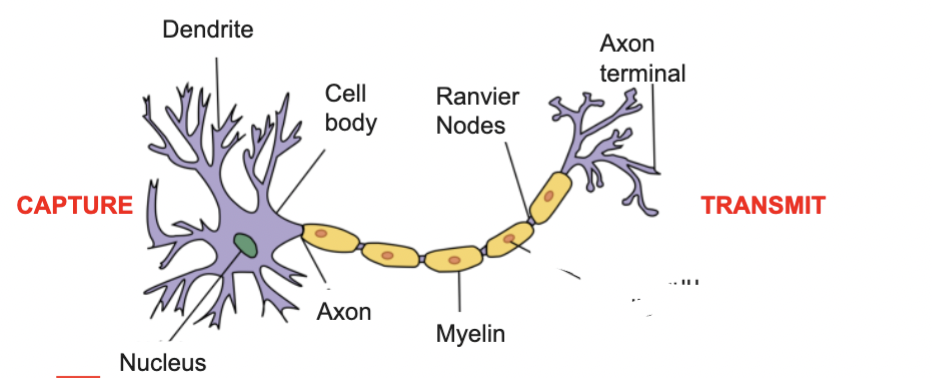Cellular Components & Functional Organ
1/4
There's no tags or description
Looks like no tags are added yet.
Name | Mastery | Learn | Test | Matching | Spaced |
|---|
No study sessions yet.
5 Terms
What are is the brain mainly composed of?
The brain is mainly composed of neuron and nueroglial cells (they support the neuron by feeding it and protecting the neurons) and would not exist without the neruons.
What happens if nuerons are not surorunded by other neurons?
The neurons won’t be receiving signals, and will eventually die due to neural pruining.
What are neurons?
Elemental units of processing and transmission of information in the NS. Neurons have a unique aspect such as action potentials and nerve impulses. Signals go from outside of the dendrites, and then go through the cellular body, to finalise in the axon terminal, this direction is always the same and cannot go backwards.
Part of a Neuron
Soma/ cell body: contains the nucleus which contain the genetic material of the cell.
Dendrites: receptors of neural messages.
Axon: large and thin tube, often covered by a myelin sheet.
Axon terminal: Nuerons communicate through synapses formed by small thickenings at the end of axon branches, releasing neurotransmitters onto the membrane of dendrites or soma.
Components:
Axon & dendrites: both have a cytoskeleton formed by microtubulues, actin microfilaments, and neurofilaments to ensure transportation through the axon and to maintain its shape.
Dendrite Function: Enlarge the cellular perimeters and make connections with near neuorns. Have filaments called dendritic spines (help expand bioelectric signals). Their function is to receive nerve impulses.
Axon function: An extension from the axon hillock. Farther from the soma, the axon has branches called terminal buttons, which establish contact wiht the target area where the signal must go (other neurons or organs). The axon deals with transmitting action potentials.

What is resting potential?
Resting neurons have a negative electric charge,, known as resting potential.